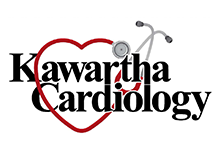ABOUT US
Overview
OUR GOAL IS TO HAVE AN EFFICIENT PATIENT CENTRED ENVIRONMENT
We provide a broad range of services that are designed to diagnose and treat cardiovascular disease and to help our patients understand that disease. The care we provide is streamlined and efficient which benefits our patients. We also strive to serve our patients and referring physicians efficiently by coordinating their appointments for convenience and safety. We strive to communicate with both patients and their referring doctors in a timely and complete manner. Our entire staff has a commitment to maintain patient privacy and confidentiality. The staff must agree to the highest standards of job performance. We also attempt to improve the patient’s entire medical experience and to prevent illness and hospitalization where possible. All employees are expected to treat patients with compassion, dignity and respect.
Our Mission
Kawartha Cardiology is committed to positively impacting the cardiovascular health of the residents of Peterborough and the surrounding counties that we serve.
Kawartha Cardiology’s mission is to provide comprehensive, integrated services focused on the identification, stratification, and modification of vascular disease with an important component of education for cardiovascular health and referral to appropriate rehabilitation.
Our Cardiologists offer expert care in the diagnosis of vascular disease, assessment of its severity, and treatment strategies to improve length and quality of life.
Kawartha Cardiology provides an array of cardiac testing to support this mission:
- Echo-Doppler
- Carotid screening
- Ambulatory ECG Monitoring (Holter)
- Ambulatory Blood Pressure Monitoring
- Stress Echo
- Standard Stress Testing
- Stress Nuclear
- Pacemaker and defibrillator care
- IVMC (Integrated Vascular Management Clinic)
Identify, Stratify, Modify
Since the mid 1980’s, we have emphasized the importance of these three elements in the detection, investigation and management of vascular disease. By using many different means to identify the presence of vascular disease, we are able to find patients who can benefit from vascular investigation and treatment. Atherosclerosis is the term that describes build-up of plaque or lumps of cholesterol and calcium in the arteries of the body. Once identified, that awareness leads to a series of steps that can prevent heart attack, stroke and sudden death.
Identify
If you have already had a heart attack or stroke, then you almost certainly have vascular disease – thus you are identified. But what if you have not had any such events? We can still detect vascular disease at a stage when treatments can prevent bad outcomes. For example, plaque in any artery demonstrated by ultrasound is proof of vascular disease. You may have had an ultrasound of the neck (carotid artery) or your legs to check for plaque. The radiologist may have commented on a chest X-ray that the aorta is dilated or calcified. A CT to check for lung cancer or other conditions may have identified the presence of calcium in the arteries that supply the heart muscle. Any of these is proof of vascular disease. These clues, among others, help us to identify a disease that has a natural history of getting worse over your lifetime. The good news is that we can alter the course of that disease to your advantage. The next step is to Stratify.
Stratify
Stratify just means to dig deeply enough to determine if your disease is an immediate threat to your life and well-being. We have a number of ways to do this but most involve some form of stress testing. Stress test results are generally categorized as high or low risk outcomes. Low risk means you either have a normal or nearly normal test. The likelihood of a life-threatening cardiac event in the foreseeable future is low. High risk tests usually mean there is a large amount of your heart muscle that is not well supplied under stress or there is more than one area of the heart affected. Sometimes tests fall somewhere in between. In that case we usually choose a different test to see if we can sort it out. Once the stratification process is complete, we can decide whether medicine alone will be enough for you or whether you might need something else like a stent or bypass surgery.
Modify
This is the step where you play a very important role. We can modify (reduce) your risk by getting you started on medications that lower cholesterol (statins usually), prevent clot formation (aspirin or similar drugs), and medications that lower blood pressure. Some conditions benefit from particular forms of drug therapy like ACE inhibitors or Beta Blockers. Together these groups of drugs are sometimes referred to as “The Lifesavers”. Your contribution to the modification process is equally important – attending a cardiac rehab, regular exercise, limiting excess salt in your diet, weight control, cessation of smoking to name a few. Together we can change (modify) the course of your vascular disease for a longer and healthier life.
